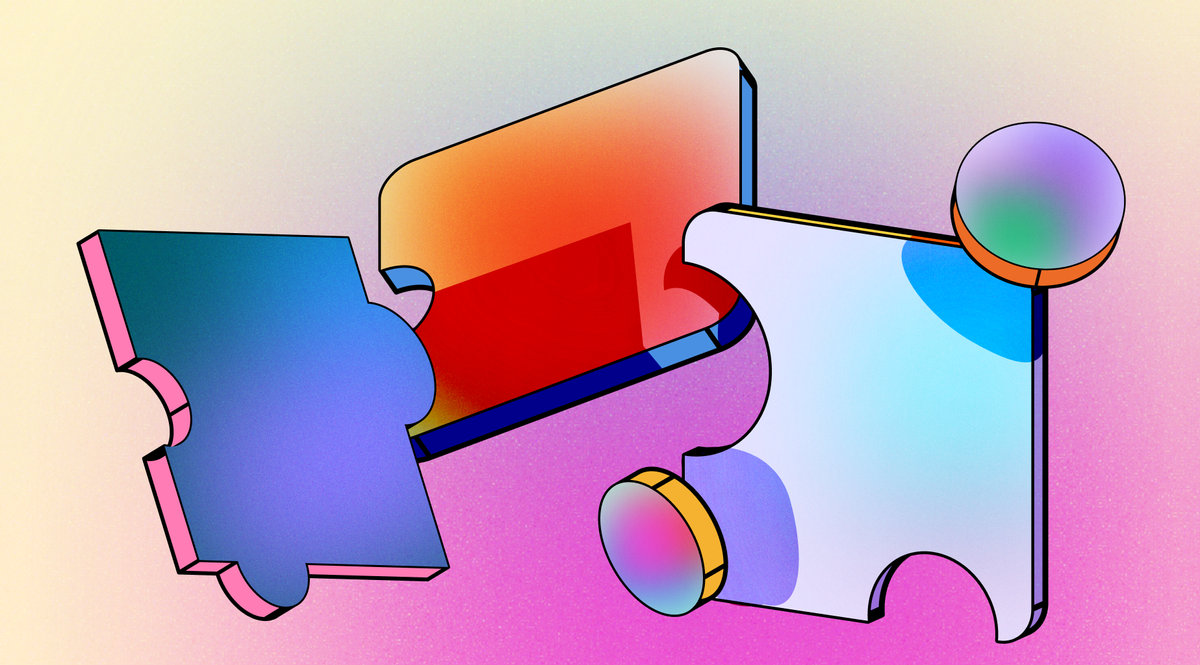
If you frequently write content, you're likely aware of the significant effort and time it demands.
From crafting an outline to producing the content and finally getting it edited, it can be quite a workload. Fortunately for those of us in documentation and content creation, there are several tips and tricks to help streamline this process and combat procrastination 🥲
In this post, I’ll share my top strategies for maximising the potential of reusable components. I refer to these as "Clips" throughout this article, which is the term used for this feature in HelpDocs.
You might know them as reusable components, templates, or something else entirely. Regardless of the software you use, I hope you find valuable insights here.
Clips can be an essential asset for saving time, ensuring consistency across articles, and maintaining a well-organized library of meticulously crafted content.
Let’s dive in! 👀
Introduction to Reusable Components (Clips)
First things first—what is a reusable component (a Clip), and why should you care?
Clips make our job easier by allowing us to create content that we can use over and over again. This means we don't have to write the same thing repeatedly, which saves us time.

Not all Clips are built the same, though. There's usually two types of Clips:
- ⚡️ Dynamic Clips: These supercharged components are updatable, meaning that when you change the content in one place, it automatically updates everywhere else it's used. Perfect for information that might need to be refreshed regularly, like notices or policy statements!
- 🧘 Static Clips: These are more like the one-and-done deal. Once you create a static Clip, it remains unchanged even if you edit the original source. This is ideal for content that doesn’t need updates across the board, such as specific formatting or evergreen tips.
So, why should you care about Clips? Let’s break it down:
- 👋 Say goodbye to repetitive tasks: No one enjoys rewriting the same procedures or guidelines repeatedly. With Clips, you create it once and reuse it whenever you need it. That's a major time-saver and helps keep your content consistent in voice and style.
- Stay organised: We’ve all been there—searching for that one piece of content hidden in a mountain of documents is no fun. Clips keeps everything neat and easily accessible, so you and your team can find what you need without the hassle.
It’s all about working smarter, not harder! And if you haven't started using Clips in your Knowledge Base yet, now’s the perfect time to hop on board! 🥳
Identifying Reusable Content
Alright, so we’ve talked about what a Clip is—but how do you actually get started with one? Let’s take a look at some easy ways to use a Clip and ensure you’re not just creating one for the sake of it.
Spotting Clip-able Content
Now that you’re excited about using Clips, let’s dive into how to find or brainstorm content that’s perfect for reusing. Here’s how to get started:
- 📄 Check Your Docs: Look through your frequently used documents. Are there phrases, processes, or guidelines that pop up often? If something needs regular updates, consider turning it into a Dynamic Clip. For example, if you're frequently updating policy statements or system notices, that's a clear win!
- 🪄 Spot the Repetitions: Think about content you find yourself sharing over and over. Maybe it’s that handy troubleshooting guide you send whenever someone calls in with the same issue. Creating a Static Clip for this kind of content can help you break the cycle of constantly recreating the wheel.
- 🏴☠️ Treasure Those Tips: Don’t forget about those nuggets of wisdom everyone loves! If you have data or advice that stays relevant, like onboarding checklists or best practices, these are perfect candidates for Clips.
The key is to think about what you or your team often find yourselves repeating or searching for.

Our content in monthly bitesized emails
Get our best content delivered straight to your inbox.
SubscribeIdentifying Clip-able content is all about spotting anything you’d want to use more than once—it’ll save you time and supercharge your documentation game! 💪💡
Examples of Clip-able Content
Now that we’ve nailed our Clip strategy, let’s dive into some real-life examples of what you can turn into Clips. These ideas should spark your creativity and get those ideas flowing!
- Standard Operating Procedures (SOPs): Have a process that your team needs to follow regularly? Create a Clip for your SOPs! This keeps everything easy to maintain and update, ensuring everyone’s on the same page.
- Onboarding Checklists: Welcoming new team members often? A Clip with a ready-to-go onboarding checklist can be a lifesaver. You can easily tweak it as needed while having a solid foundation ready to roll.
- Product Descriptions: For any products or services you offer, crafting a Clip with detailed descriptions helps maintain brand voice and messaging consistency across your website, marketing materials, and support docs.
- Important Notices: Consider a Clip for when your platform or shop is down for maintenance, or for sharing info about your annual team retreat. Use Dynamic Clips to keep everything up to date!
- New Article Templates: Create Clips that teammates can easily insert into a blank article to get started faster.
- Custom code: Creating some custom code elements for inside your article (we call these HTML Blocks)? Use a Clip to make it easy to reuse it time and time again.
These examples are just the beginning! Think about your team’s unique needs and how you communicate regularly—there’s a treasure trove of content just waiting to become a Clip.
Best Practices for Creating Clips
Clipping isn't the most straightforward process—it can get clunky if you don't have a strategy. Having some set standards for your Clips can make the process much easier. Here's our take on making sure you don't end up in a Clip-amity 😵
Best Practices for Structuring a Clip
Getting the structure of your Clips right is key to making them super effective and user-friendly. Here are some handy tips to keep in mind:
- 🍭 Short n' Sweet: Aim for simplicity! Break down your content into easy-to-digest chunks and make sure they're small so you can actually reuse them. Use bullet points or numbered lists to make it skimmable. The goal is to ensure that users can quickly grab the info they need.
- 🎙️ Use Descriptive Titles: Make sure each Clip has a catchy and informative title. A good title gives users a clear idea of what the content covers, making it easier to find what they're looking for later.
- 🖌️ Maintain Consistent Formatting: Stick to a standardised format for all your Clips. This includes font size, headings, and styles. Consistency not only looks professional but also helps users navigate through your content smoothly.
- 🔄 Regularly Review and Update: Just like any good content, your Clips need some TLC too! Schedule regular check-ins to keep everything up to date and relevant, especially for Dynamic Clips that may require frequent revisions.
By following these best practices, you’ll create Clips that not only serve their purpose but are also a joy to use—making everyone's life just a little bit easier! 🎉
Best Practices for Dynamic Clips
Dynamic Clips are a fantastic way to keep your content fresh, but they require a bit of extra love to ensure they’re doing their job right. Here are some best practices to make your Dynamic Clips shine:
- Set Clear Guidelines: Each Dynamic Clip should have clear guidelines on when and how it will be updated. This could be based on your company’s policies, upcoming events, or frequent feedback from your team (which could also be contained in a Clip. Clipception 🤯).
- Incorporate User Feedback: Don’t be shy about asking your team for input! Regularly collect their thoughts on the usefulness and clarity of your Dynamic Clips. If something isn’t working, tweak it based on their suggestions to keep everyone in the loop.
- Schedule Regular Reviews: Just like we mentioned before, your Dynamic Clips will benefit from regular check-ins. Set reminders to review them regularly to keep the content relevant and ensure it still serves its purpose.
By following these best practices, your Dynamic Clips will stay as lively and helpful as ever, providing your team with the most accurate and up-to-date information—all while making your workflow a breeze! 🌟
Best Practices for Static Clips
When it comes to Static Clips, going for evergreen content is the way to go! 🌿

Evergreen content is that type of material that stays relevant no matter the season—think timeless tips, classic procedures, or essential guidelines. Here’s how to craft those all-important Static Clips that won’t go out of style:
- Identify Timeless Topics: Start by thinking about what information your team or customers constantly need. Is it a set of troubleshooting steps? Maybe a guide on company values or mission statements? These are the gems you want to immortalize in a Clip.
- Use Clear and Concise Language: Keep it straightforward! Focus on clarity and simplicity to make sure everyone can understand and utilize the Clip without confusion. The goal is for it to be helpful for years to come.
- Incorporate Visuals: Sometimes a picture is worth a thousand words. If your Clip can benefit from visuals like diagrams or screenshots, go ahead and add them! They can help break down complex information and make it easier to grasp.
- Plan for Maintenance: While evergreen content is designed to last, it shouldn't gather dust. Schedule periodic reviews to ensure that everything remains accurate and up-to-date, particularly if any underlying processes shift over time.
By creating these evergreen Static Clips, you'll build a solid foundation of content that your team can rely on, saving time and effort in the long run!
Plus, who doesn't love having easy access to reliable information? 🌟
Utilising Metadata for Your Clips
Alright, let’s dive into the world of metadata!
While the structure and content of your Clips are super important, adding a layer of metadata can really boost their effectiveness. Think of metadata as the little helper that ensures your Clips are easy to find and navigate.
It’s all about giving context and enhancing the user experience, so folks can swiftly locate exactly what they need without any fuss.

Let’s break down some ways you can utilise metadata to make your content even more user-friendly and accessible!
Creating a Naming Convention for Your Clips
Establishing a solid naming convention for your Clips is like giving them their own addresses—you'll always know where to find them! 🗺️ A clear and concise system can help your team quickly identify the purpose of each Clip, making navigation a breeze.
Here are a few ideas to get you started:
- Use Context Codes: Prefixing your Clip names with relevant codes can instantly convey the content's purpose. For example, you might use `[CS]` for Customer Support Clips, `[AT]` for article templates, and `[INTL]` for internal documents. This makes it super easy to filter and search through Clips based on their function.
- Incorporate Team Initials: If different teams are creating Clips, consider adding their initials to the title. For instance, `[MK] Marketing Strategy` or `[HR] Employee Onboarding`. This not only gives credit to the team behind the Clip but also helps in quickly organizing content.
- Add Version Numbers: If your Clips are likely to be updated regularly, incorporating a version number can be useful. Something like `Product Guide v2.0` will help everyone know if they’re looking at the most current information.
- Keep It Descriptive: While being concise is key, make sure your titles still provide a clear idea of what the Clip covers. A title like `[CS] Troubleshooting Common Issues` is more informative than just `[CS] Troubleshooting`.
By implementing a thoughtful naming convention, you’ll enhance the usability of your Clips, making it easier for everyone to retrieve the information they need without wading through a sea of content!
Plus, it adds that professional touch to your organisation 😊
Making Sharing or Edit Decisions with Your Clips
When it comes to sharing or editing your Clips, making thoughtful decisions can really elevate teamwork and collaboration. Here’s a friendly guide on how to navigate these choices to ensure everyone’s on the same page!
🫶 Sharing Your Clips with the Team
- Open the Floor for Collaboration: If a Clip is relevant to your whole team or specific group, don’t hesitate to share it widely! Tools that allow for easy sharing make it simple to keep everyone in the loop. Plus, getting diverse perspectives can enhance the quality of the Clip.
- Utilise Permissions Wisely: Depending on the platform you’re using, you might have the option to set different permission levels. You could let everyone view the Clip but limit editing privileges to a few key players. This helps maintain consistency while still fostering collaboration.
- Keeping it to Yourself: Sometimes it makes sense to keep a Clip just for your eyes only! 🤫 Maybe you're still in the process of fine-tuning the content, or you have sensitive information that isn't ready for broader sharing. Keeping a Clip private allows you to brainstorm, experiment, and refine your thoughts without the pressure of external feedback.
🔐 Locking Clips for Stability
- Consider Locking Important Clips: For your critical Clips that serve as official guidelines or reference material, locking them can be a smart move. This prevents accidental edits and ensures that everyone is referring to the most accurate version.
- Regularly Review Locked Clips: Just because a Clip is locked doesn’t mean it’s set in stone! Schedule periodic reviews to evaluate its relevance. If updates are needed, unlock it, make the necessary changes, and then relock it again.
With the right approach to sharing and editing decisions, your Clips can be powerful tools that empower your team, enhance collaboration, and maintain the quality of your content.
Remember, a little thoughtfulness goes a long way in keeping your workflow smooth and supportive! 🌟
Deciding if a Clip Should be Dynamic or Static
Alright, let’s dive into when to choose a Dynamic Clip versus a Static one! The decision really hinges on how often your content changes or how interactive you want it to be.
Dynamic Clips
Dynamic Clips are your go-to for content that’s frequently updated or linked to ongoing processes.
They’re great for:
- Real-time data: If you're running a marketing campaign that tweaks itself on the fly, a Dynamic Clip keeps everyone aligned without the hassle of creating new content every time something shifts.
- Project updates: Think of a sales dashboard pulling in live metrics or a project timeline that needs regular updates from team members. Dynamic Clips make it easy for people to stay in the loop!
- Event schedules: If you're organizing a conference, a Dynamic Clip can present the most current agenda and speaker lineup right inside your help article.
- Live social media feeds: Showcasing real-time user engagement or activity during an event or campaign.
- Inventory levels: For retail businesses, Dynamic Clips can display stock levels that change frequently using custom code, helping teams make informed decisions.
On the flip side, Static Clips are fantastic when your content is set in stone and doesn’t need constant tweaking. These are perfect for:
- Onboarding materials: New hires benefit from clear guides that don’t change much.
- Company policies: Once established, these resources should be reliable and not altered frequently.
- Standard operating procedures: A Static Clip could be your company’s employee handbook—outlining rules and procedures that stay the same until the annual review.
- Training modules: Courses that cover foundational skills or knowledge that doesn’t change often.
At the end of the day, it’s all about understanding your content's nature and how your team will use it. Choose a Dynamic approach when flexibility is essential, and stick with Static when you need that stability! 🌈
Updating and Maintaining Clips
Keeping your Clips fresh and relevant is super important for maintaining a seamless workflow.
Why? First, having current information means everyone on your team can trust what they're reading—no one wants to be misled by outdated guidelines or data! Plus, regularly refreshed content boosts productivity; when your Clips accurately reflect the latest processes or findings, your team spends less time searching for clarifications and more time getting things done.

Not to mention, keeping things up-to-date shows that you value your team's time and effort.
When they see that resources are maintained and relevant, it fosters a sense of professionalism and trust within the team. Oh, and let’s not forget that fresh content can spur new ideas and collaboration, opening the floor for discussions that can lead to even better workflows!
Here are some friendly tips on how to keep those Clips updated and well-maintained:
- Schedule Regular Check-ins: Bring up the status of your Clips during quarterly or bi-annual meetings. This way, everyone stays in the loop about what’s current and what might need some tweaking. Think of it as a little content refresh party! 🎈
- Note Potential Updates: During team meetings, jot down notes about any potential updates or changes needed. This could be feedback from team members or new information that needs to be included. Having a running list makes it easier to revisit later!
- Assign Responsibilities: Designate someone to take charge of updating specific Clips. This person can be the go-to for all things related to Clips, ensuring accountability and a sense of ownership. It also helps to streamline the process so that updates don’t fall through the cracks.
- Encourage Feedback: Create an open environment where your team feels comfortable suggesting updates or improvements for the Clips. You’d be surprised how a little input can lead to significant enhancements!
- Track Changes: Keep a log of what changes have been made and when. This can help anyone involved in content management stay aware of each Clip's history, making future updates easier and more informed.
By implementing these strategies, you can make sure your Clips are always up to date and working hard for your team. Remember, staying proactive about updates leads to smoother collaboration and keeps everyone on the same page! 🌟
Example Clips and Their Purpose
Let’s take a look at some practical examples of Clips and why they were created. These will give you a better idea of how to effectively implement both Static and Dynamic options in your content!
- Custom Code Element for API Information (Static)
Once, you worked on a project where your team needed reliable access to essential information from your company’s API, like product specs and feature lists.
These details were crucial but rarely changed, which meant constant updates would be a hassle.
You realised you needed a solution that provided consistent access without the ongoing effort of keeping everything current. To tackle this, you created an HTML Block inside a Static Clip. This allowed you to fetch and display the important information from the API seamlessly.
Now, your customers can easily reference the key details they need while looking at your docs.
- Company Retreat Information (Dynamic)
When you planned a company retreat, you decided to use a Dynamic Clip to share real-time updates on schedules, locations, and activities.
This Clip turned out to be perfect for addressing team questions, as adjustments often arose from teammate feedback or logistical needs. By keeping the information dynamic, you ensured that everyone stayed informed about the latest developments and changes, fostering transparency and engagement throughout the event.
- Department Overview Table (Static)
Imagine you have a handy table that outlines all the various departments within your company.
This Static Clip provides a brief description of each department, their primary functions, and contact information. Since this information doesn’t change often, it serves as a reliable resource for you and your colleagues.
It makes navigating the company structure a breeze and fosters better inter-departmental communication, helping you connect with others effortlessly.
Time to Start Clipping
So there you have it! Understanding the power of Clips can really supercharge your team's efficiency and communication.
By applying the right strategy for your content, you ensure everyone is on the same page and reduce the friction that often comes with ambiguous or outdated information. When everyone has access to reliable resources, trust builds within the team, and that can lead to greater collaboration and creativity.
Updating and maintaining your Clips isn't just a task—it's a commitment to keeping your workflow smooth and your team empowered! The tips we've shared, from scheduling regular check-ins to encouraging feedback, serve as a roadmap to ensure your resources evolve alongside your team's needs ✌️
Remember, the goal here is to create an environment where information flows freely, and everyone feels equipped to do their best work. Each Clip can act as a stepping stone toward innovation, making it easier to share insights and tackle challenges together.
As you move forward, embrace the flexibility of Dynamic Clips when changes are inevitable, and lean on the stability of Static Clips for those essential, unchanging guidelines.
By striking this balance, you'll foster a culture of adaptability and efficiency, which is crucial in today's fast-paced work environment. So, let’s keep those Clips fresh, relevant, and fun! Your team deserves it! 🖇️

